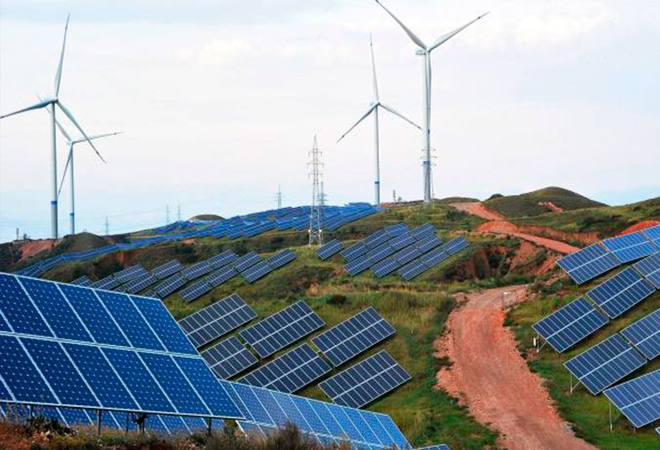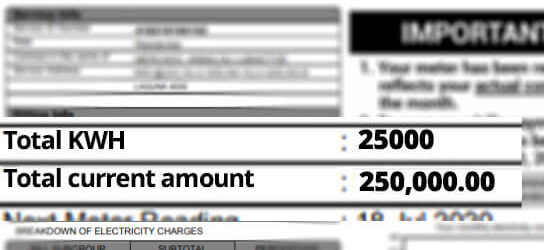As countries around the world realize the need to transition to more sustainable energy sources, Renewable energy has been gaining significant attention. For countries in the South East Asia region where energy demand has been constantly growing and natural sources are abundant, the potential for renewable energy adoption is enormous. Even so, the region is still heavily reliant on fossil fuels that contribute to environmental challenges such as climate change.
This article will discuss the rise of renewable energy adoption in South East Asia. We will examine the current energy landscape, government policies and initiatives that affect renewables, the important role of the private sector and renewable energy projects. We will also explore the challenges that face the transition to renewable energy and its future in South East Asia with the goal of gaining a deeper understanding of the potential for renewable energy in South East Asia and the challenges and opportunities that lie ahead.
The Current Energy Landscape in South East Asia
Fossil fuel still dominates the energy landscape in South East Asia, particularly coal and oil. According to the International Energy Agency (IEA), Southeast Asia’s energy demand is expected to grow by 60% between 2018 and 2040. Coal will still continue to be the largest source of energy. The region’s reliance on fossil fuel is contributing to environmental challenges such as air pollution and climate change.
Air pollution in the region has reached alarming levels. Jakarta, Bangkok and Manila ranks among the most polluted in the world and fossil fuel is a significant contributor to this problem. It has negatively affected the health and well-being of millions of people. It has also led to economic vulnerability as the fluctuation of fossil fuel prices has significantly impacted the region’s economy
Source: IRENA renewable power generation cost in 2021
The cost of renewable energy technologies have fallen significantly in the past few years, making it competitive with fossil fuels. With the potential of Renewables however, the transition in South East Asia has been relatively slow due to the lack of infrastructure, financing constraints and uncertainties with policies regarding energy.
Overall, it is apparent that the need to transition to Renewable Energy is urgent for the region to promote sustainable development and address both economic and social challenges caused by environmental issues. Coal may still continue to be an essential part of the energy mix for the region, but increasing renewables in the region’s energy mix will be essential for the region.
The Shift Towards Renewable Energy in South East Asia
In recent years, governments in the South East Asia region have been prioritizing renewable energy to diversify their energy mix and reduce carbon emissions. These countries have introduced policies and initiatives to promote the transition to renewable energy. These include, among others, feed-in tariffs, renewable energy targets and tax incentives for investors.
There has also been an increase in the involvement of the private sector with regards to the development of renewable energy projects. Thailand-based company B.Grimm Power has invested heavily in solar and wind power projects in Thailand, Vietnam, and Laos. Similarly, Philippines-based Ayala Corporation has invested in a range of renewable energy projects, including wind, solar, and hydroelectric power.
Source: The Asean Post: Renewable Energy Challenges in South East Asia
There has also been growth in investment and financing options for renewable energy projects. Various multilateral and bilateral agencies have been offering technical support to governments and the private sector. For example, the Asian Development Bank (ADB) have invested heavily in Solar and Wind power projects across the region.
Examples of Renewable Energy Projects in South East Asia
There are many renewable projects and initiatives in South East Asia. From small-scale community projects to large scale community projects. Here are just a few notable examples
The Tolo 1 Wind Farm in Indonesia
Located in the South Sulawesi province of Indonesia. This is one of the largest in the country, with a capacity of 72MW. The project was developed by Equis Energy, a Singapore-based company that specializes in renewable energy projects in the Asia-Pacific region.
The Bau Bang Solar Power Plant in Vietnam
This solar power plant, with a capacity of 450 MW, is one of the largest in South East Asia. The project was developed by Singapore-based Sunseap Group and has helped to increase Vietnam’s renewable energy capacity significantly.
The Solar-Powered Water Supply Project in Cambodia
This project, which is being implemented by the United Nations Development Programme (UNDP) and the Cambodian government, aims to provide clean water to rural communities using solar-powered water pumps. The project has helped to improve access to clean water in remote areas of the country.
Green Innovations for Tomorrow Corp. Biomass Power Plant in the Philippines
 This Biomass Energy Plant uses agricultural waste to fuel a steam turbine. This Project success is the fruit of the great collaboration between GIFTC management, their EPC, AREVA Renewable Energies and their Erection Contractor, Engcon Energy Philippines.
This Biomass Energy Plant uses agricultural waste to fuel a steam turbine. This Project success is the fruit of the great collaboration between GIFTC management, their EPC, AREVA Renewable Energies and their Erection Contractor, Engcon Energy Philippines.
The Future of Renewable Energy in South East Asia
The future of renewable energy in South East Asia is promising, with significant potential for growth in the coming years. The International Renewable Energy Agency (IRENA) predicts that the region’s renewable energy capacity will increase by more than 250% by 2030, with the potential to create more than 1 million jobs in the sector.
There are several factors that will drive the growth of renewable energy in the region. First, there is a growing recognition among governments and businesses of the need to reduce carbon emissions and mitigate the impacts of climate change. This has led to increased investment and policy support for renewable energy projects. Second, renewable energy technologies are becoming increasingly cost-competitive with fossil fuels, making them more attractive to investors and consumers. For example, the cost of solar photovoltaic (PV) modules has declined significantly over the past decade, making solar power a more affordable option for households and businesses. Third, there is a growing demand for energy in the region, driven by population growth and economic development. Renewable energy can help to meet this demand in a sustainable and affordable manner.
To achieve the full potential of renewable energy in South East Asia, however, there are several challenges that need to be addressed. These include the need for infrastructure and technology, financing constraints, and policy uncertainties. Governments, the private sector, and international organizations will need to work together to overcome these challenges and create an enabling environment for renewable energy development.
In conclusion, the rise of renewable energy adoption in South East Asia is a positive development for the region and the planet as a whole. The shift towards renewable energy in the region is driven by a combination of factors, including the need to reduce carbon emissions, the increasing affordability of renewable energy technologies, and the growing demand for energy in the region.
Despite the challenges that need to be addressed, there are many examples of successful renewable energy projects in the region, from large-scale wind and solar power plants to community-based projects using solar-powered water pumps. These projects demonstrate the potential of renewable energy to create jobs, reduce greenhouse gas emissions, and improve energy access in the region.
Looking to the future, the potential for renewable energy in South East Asia is immense, with significant growth expected in the coming years. However, achieving this potential will require continued investment, policy support, and international cooperation. Governments, the private sector, and civil society organizations all have a role to play in ensuring that renewable energy becomes an integral part of the region’s energy mix, and that the benefits of renewable energy are shared equitably across society.








